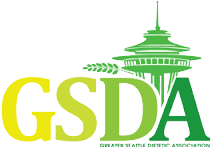Day of Remembrance – Japanese Internment During WWII and the Impact on Washington State Food Systems
By Erin Cazel
On February 19, 1942, in response to the bombing at Pearl Harbor and increasing levels of wartime fear mongering, President Franklin Delano Roosevelt signed into effect Executive Order 9066. Also referred to as the Exclusion Act, this order resulted in the incarceration of over 120,000 people of Japanese ancestry living on the West Coast (two-thirds of whom were unconstitutionally imprisoned American citizens). Overnight, the lives of hundreds of Japanese and Japanese-American families were forever changed when they were forced to evacuate from their homes into ten “relocation centers” for up to four years throughout World War II. Families were given six days to make arrangements for their properties and personal possessions. They were allowed just one suitcase per family to transport clothing, toiletries, cookware, and other daily essentials for life in the concentration camps. It’s estimated that families were forced to leave behind $200 million dollars worth of personal, business, real estate, and agricultural property, on top of losing tens of thousands of dollars in wages and business revenue annually. However, the generational devastation this created for families and communities is incalculable.
The greater Seattle area was hit especially hard, with reverberations still felt today. Prior to World War II, Japanese immigrants played an extraordinary role in developing and enhancing the agricultural infrastructure of Washington State. By the 1920s, more than 1,000 Japanese farmers had cultivated 25,000 acres in Washington. Though only a small percentage of the general population, Japanese and Japanese Americans comprised a majority of the agricultural workforce (for example, 90% in Bellevue). Japanese farmers supplied 75% of King County’s produce, half of the milk supply, and accounted for the majority of the 500+ stalls in the newly opened Pike Place Market. The centers of Japanese agriculture included Bainbridge and Vashon Islands, Puyallup and White River Valleys, and Bellevue. By far, the star crop was the strawberry.
Strawberries took off as a successful crop thanks to the back-breaking work of Japanese immigrants in clearing land and the meticulous experiments designed by Japanese farmers to optimize strawberry cultivation. In Bellevue, prominent Japanese farmers galvanized the community to create the Bellevue Strawberry Festival, an annual event drawing tourists from all over. The festival ran from 1925 to 1942, when the 70 Japanese and Japanese American families in Bellevue were forced from their homes and farmland. That year, the strawberries remained unharvested.
At the end of World War II, few families chose to return to the homes they had been forced to leave. Approximately 20 of the 70 Japanese American farming families in Bellevue chose to return. Provided with a one-way train ticket and $25 each, those who returned came “home” to burned or ransacked properties and sabotaged wells filled with garbage and dead animals. These families were then pressured to leave their lands to make way for development projects such as Bellevue Square, which sits where Japanese American strawberry farms were once established.
The community on Bainbridge Island was a notable exception to the gross mistreatment of Japanese Americans in the WWII era. The Bainbridge Review was the only newspaper on the West Coast to defend the rights of local Japanese members after the Executive Order was announced. Many neighbors cared for the properties and farms of their Japanese neighbors and welcomed them back after the war. Today, Bainbridge Island is home to the Exclusion Memorial, which honors the 267 Japanese and Japanese Americans living on Bainbridge Island in 1942 at the time of the Exclusion Act. The Exclusion Memorial seeks to be a place where future generations can learn about historical injustices, honor those who endured such suffering, and become a space for humans to join together in healing, forgiveness, and care for one another.
As nutrition professionals, we understand that individual health is inextricably linked with community wellbeing as well as the vitality of the land itself. On this Day of Remembrance, we must remember and share the stories, both good and bad, evil and triumphant, that have shaped our communities and food systems. We can stand together with the motto and mission of the Exclusion Memorial in saying, “Nidoto nai yoni – Let it not happen again.”
There are many resources in the Seattle area to learn more about the Japanese American experience during World War II. Some examples include:
- Visit and View:
- Bainbridge Island Japanese American Community: Information about the Exclusion Memorial, history including photographs and videos, and community events such as the Mochi Tsuki.
- Wing Luke Museum: Vivid historical presentation of historical and contemporary Asian and Asian American communities, lives, and experiences in Seattle.
- Densho: Collection of oral testimonies of Japanese Americans unjustly imprisoned during WWII.
- Articles:
- How Bellevue businessmen who stoked fears benefited after Japanese American incarceration. The Seattle Globalist.
- Prisoners in Their Own Land: Life in a Japanese internment camp. King5.
- Japanese Farmers in Bellevue (1898 – 1942). Eastside Heritage Center.
- Japanese American Incarceration. The National WWII Museum | New Orleans.
- Seattle Remembers the Japanese Internment. Seattle Magazine.
Japanese Farming. HistoryLink.org. - Children of the Camps: Internment History. PBS.
- Executive Order 9066: Resulting in Japanese-American Incarceration (1942). National Archives.
